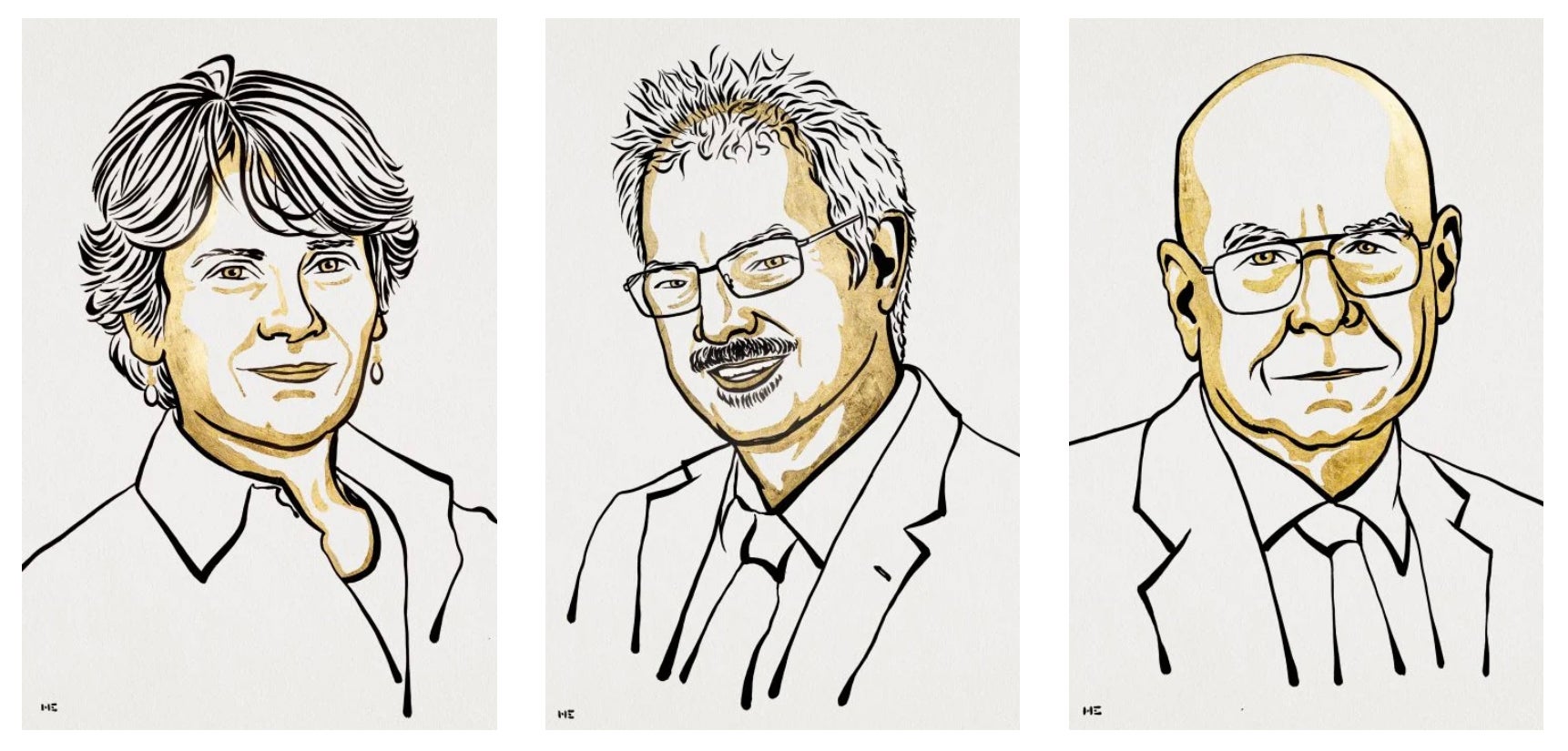Three researchers won the Nobel Prize in Chemistry on Wednesday for their discovery of methods to “click” molecular building blocks together, forming complex molecules that can be used to develop drugs or craft entirely new materials.
Morten Meldal of the University of Copenhagen and K. Barry Sharpless of the Scripps Research Institute in La Jolla, Calif., won for their development, around the turn of the 21st century, of “click chemistry”—a way to link two molecules together in a simple reaction that creates larger, more complicated forms of molecules with myriad capabilities. “It’s like building Legos,” said a member of the Nobel Committee for Chemistry during the prize announcement. This is the second Nobel for Sharpless, who shared the chemistry prize in 2001 for designing specialized chemical reactions.
Carolyn R. Bertozzi of Stanford University took click chemistry into the realm of living cells. In a method called “bio-orthogonal chemistry,” she figured out how to attach light-emitting compounds to biological molecules on a cell. This enabled Bertozzi and other scientists to track these molecules around the cell, thus learning how the molecules contribute to disease—and how to develop drugs to combat the illness process.

“I’m absolutely stunned…,” said Bertozzi when she was reached by phone from the Nobel announcement news conference and told she had won the prize. “I’m still not entirely positive that it’s real. But it’s getting realer by the minute.” Bertozzi is the eighth woman to win the chemistry Nobel.
Life is filled with large, complicated molecules, and for decades chemists had repeatedly stumbled in their efforts to re-create them. Many attempts resulted in unwanted side reactions, making efforts to synthesize useful drugs and novel materials slow and expensive. Sharpless and Meldal’s insight was to start small. They took several simple molecules and added copper ions, which helped the small molecular building blocks combine into a larger form. The two researchers’ breakthrough achievements were independently published in separate papers in 2002. The scientists showed that two small molecules, an azide and an alkyne, could—with the help of copper—be locked together into a multipart ring. The process is called the copper catalyzed azide-alkyne reaction. Meldal showed that copper controls the reaction. Sharpless demonstrated that the azide acts like a loaded spring whose force is released by the copper, allowing it to jump forward into the alkyne.
Clicking in these molecules allows chemists to easily change the behavior of a material. Clickable components can improve a substance’s ability to conduct electricity or repel bacteria or can help it map a DNA sequence.
But copper does not work well in living cells. It is in fact toxic and disrupts biological processes. Thus, it could not be used to click molecules together within a cell. Bertozzi solved that problem by altering the configuration of the alkyne. She forced the molecule into a ring-shaped structure, which contained a great deal of energy. The added energy made the alkyne “explode” into a nearby azide, linking the two molecules together.
This basic approach made it possible to attach other molecules. Bertozzi was able to lock glowing fluorescent substances onto cell-surface molecules called glycans and to then use this light to track the movement of glycans on the cell. The process revealed aspects of cell development and ways in which cancer cells progress. Notably, Bertozzi’s bio-orthogonal chemistry has helped researchers develop new types of cancer drugs. Glycans seem to protect tumor cells—so researchers have joined antibodies that home in on glycans to enzymes that break these molecules down. Without the glycans, tumor cells should be more vulnerable to attack by the body’s immune system. These antibody drugs are currently being tested for effectiveness in people.
“It’s exciting to be able to do this work in the human body,” says Angela K. Wilson, president of the American Chemical Society and a theoretical chemist at Michigan State University. “It’s not just being used to develop targeted cancer therapy but for antiviral drugs, tissue regeneration and enzyme inhibition.”
This work has had an “enormous impact on science,” said Olof Ramström, a member of the Nobel Committee for Chemistry, during the prize announcement. The three researchers will share the equivalent of more than $900,000 and are set to attend the prize ceremony in Stockholm in December.
